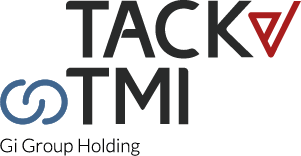Leading remote and hybrid teams
First of all; what do we mean by hybrid teams?
This article will cover all our best tips for leading remote teams, but maybe you’re facing an even tougher challenge? Part of the team working from home, some in the workplace, maybe not even co-located but working across different offices, creating additional challenges.
Home working versus office working
It is possible that members of the team may not be happy with the mix in working styles. To those based in the office, still commuting, potentially taking a higher proportion of calls, receiving more requests from you, their leader, simply because they’re in the right place at the right time; easier to communicate with, it may feel like there are higher expectations.
For those working at home, perhaps suffering with inadequate broadband to cover everyone’s needs, juggling homeworking with childcare and home schooling, managing personal relationships and commitments, it may seem like a luxury to return to the office and return to some sense of normality.
According to a recent Financial Times article, we can expect an influx of discrimination cases as home workers feel overlooked for promotions as leaders unconsciously favour those who are present and in the office. Realistically, if you offer flexible working, it is likely to be predominantly those with families and most likely women with children who take up the opportunity, further highlighting gender equality issues exacerbated by the Covid-19 pandemic. The same article cites a Stanford University study from China showing that despite a happier, more productive home workforce, homeworkers were promoted at around half the rate of office based staff.
What does a hybrid leader need to do?
The first step is of course, to ensure you’re treating everyone fairly. Have a conversation with each team member about their personal situation, their aspirations and their development needs. Chances are that everyone has been so focused on the here and now; how to work in the current situation, that some of the team may have lost sight of the longer term.
Agree to an open exchange with each team member on how to balance new tasks, new business opportunities, individual and team development opportunities with their current workload and how to rebalance workloads across the team as task and project resource requirements shift.
Then it’s time to turn your attention to the team and their communications. As a leader, your task is to create an atmosphere where everyone has equal input and understands each other’s needs, passions and challenges. A place where honest communication and feedback is the norm.
After a great deal of home-working; the possibility of misperceptions, miscommunications and a build-up of resentments, it is important that people can openly share how they feel and to be truly heard.
A time bound venting session could help to clear the air. Ensure every voice is heard, focus on the feelings (no-one can argue with another’s emotions!) and possibly return to each speaker for additional information after they’ve heard each other’s views. Acknowledge feelings as they come up and explicitly notice the commonalities; for example; “it seems to me that you’re all trying to do the best job you can”, “there seem to be different issues working in the office and from home, but a similar level of struggle”, to highlight the common ground and rebuild empathy.
You’ll soon hear the tone change, as people really feel they’ve been heard, you’ll feel the change from a need to vent, to a desire to move away from the complaints and to look forward. Ensure everyone recognises this pivotal point with something like; “it sounds like there’s a real desire to make some changes here to improve all our experiences”.
This is the time to hear all collective feedback from your team. Keep the session light, this time should be treated as open forum to create as many ideas as possible, encourage others to build on ideas as they come up to ensure you maintain an environment where everyone feels heard. Allow the team to rank and review the ideas and choose which to prioritise; it is after all, their team environment and they should be involved in creating the right time dynamic and atmosphere.
Work:Life balance
The other side of the coin to increased flexibility is the question of whether your home-workers are switching off after work. Flexibility may be a great benefit of homeworking for some of your team -taking a break from work when children need home schooling, or starting early/late to manage other commitments – but how productive are people when they are tired or stressed from juggling competing obligations?
Some of your team may be enjoying flexibility and managing the balance well whereas others may feel increased stress that can lead to a reduction in engagement and productivity by up to 30%.
By making simple changes and encouraging open communication, leaders can drive double-digit productivity increases, but keep in mind that the benefits of removing chronic stress may take 4-6 weeks to show, so it’s important not to expect too much too soon or this may re-introduce the stress.
Camera on or camera off?
This may seem like such as simple question, but it has major implications for the team atmosphere. And it’s not just a question of cameras, but also a question for the hybrid team. Are the office-based workers collecting (socially distanced) in a single meeting room, with everyone else dialling in? How will you maintain a fair and equal say for everyone, if some are in the room, some are on video and some may even be just dialling in? Can the virtual participants even see everyone in the real meeting room?
In terms of the camera on/off question; there are pros and cons to each approach. Some studies show that if your camera is off it reduces trust and leads to a perception of “something to hide”.
However, some psychology studies show us that it is much more stressful to keep the camera on and can lead to increased levels of anxiety.
Once again, it is up to the leader to facilitate a discussion with the whole team, taking a step back, exploring the pros and cons, taking suggestions and agreeing a protocol that everyone can live with.
The return to normal
According to a UK Government study, most people want to continue to work from home, at least part of the time, after Covid restrictions are eased.
And yet many leaders are calling for a complete return to the office. For example David Solomon from Goldman Sachs is determined that to reap the benefits of innovation and collaboration and to ensure the corporate culture is not lost, a return to the office is imperative.
So how can we reap the benefits of innovation, collaboration and great communication, whilst retaining flexibility?
Leaders should avoid making an “all in” or “all out” type decision. Show your commitment to collaboration, communication and an inclusive culture by allowing your team to explore the pros and cons, then establish their own working “ground rules” to ensure engagement right now and a protocol to check in on how the ground rules are working for the future.
Lindsey Byrne, Senior Training Consultant, Tack TMI UK
Tack TMI are on hand to support you in leading and managing remote and hybrid teams. Get in touch today for further information.
News & Insights

Entrepreneur: 14 proven ways to improve your communication skills
Successful business leaders are able to draw on their communication skills to improve relationships with both customers and key stakeholders. So, how can you improve your communication skills and become a more successful leader?
Read more >

